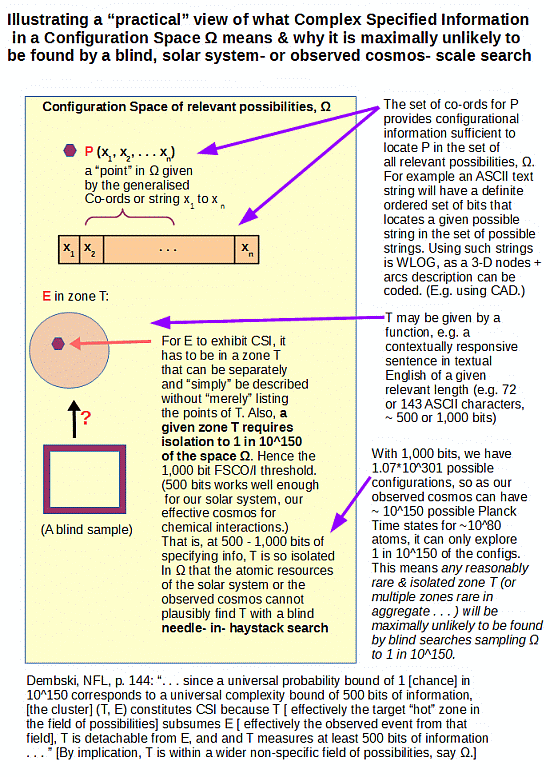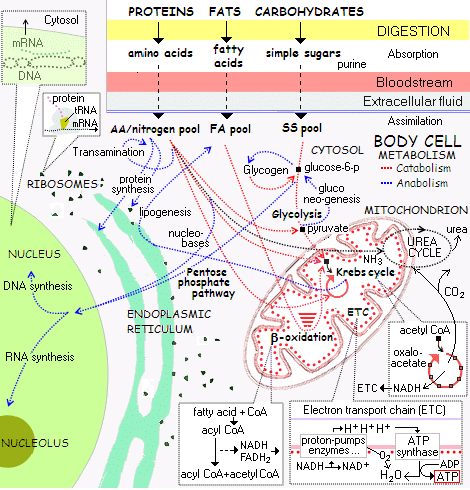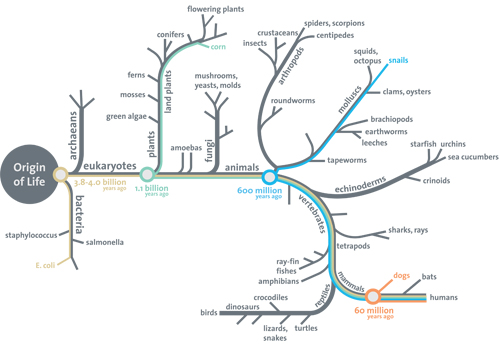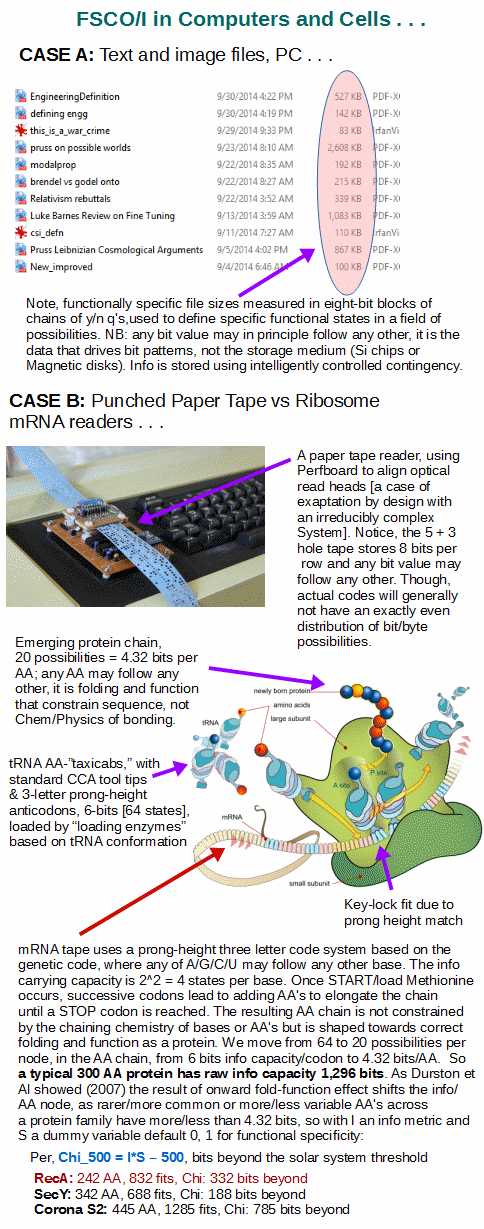Overnight, HT Mung, this was drawn to my attention:
JF, TSZ: At the UD thread there were some loud dismissals of models that had genotypes and a fitness surface. It was declared that these genetic algorithms weren’t models of evolution. Actually DEM called such models “evolutionary search”, so they don’t seem to agree with the ID supporters in the UD thread.
I think I should headline my reply, FTR:
_______________
>> The concern is not whether hill climbing can work incrementally to give local optimisation or some close cousin to that; which can legitimately be described as evolution and tracked to correlate with the actually empirically observed case: microevolution. That hill climbing approach, we all learned in our first calculus course as we seek maxima, minima and points of inflexion.
The issue at stake is that for systems exhibiting a certain character, functionally specific complex interactive Wicken wiring diagram based organisation and associated information FSCO/I for short . . . the material subset of CSI . . . the requisites of interaction that yields particular function call for correctly arranged and coupled, well matched parts. {I add, as illustration, an Abu 6500 fishing reel:}
{where, we may compare a petroleum refinery:}

{Also, the cellular metabolic network}
{And zoom in on the protein synthesis subsystem, top left:}

Thus we are locked down to a narrow zone or zones Ti ( i = 1 to n as usual) in the much wider set of possible clumped and/or scattered arrangements constituting the configuration space W. Where Ti is such that length of the string of structured y/n q’s to describe configs exhibiting FSCO/I is at least 500 – 1,000 bits, i.e. 72 – 143 ASCII characters. Not a lot. This is directly tied to Kolmogorov complexity. For practical cases think AutoCAD etc.
 This is what sets up the needle in haystack search challenge that Marks, Dembski et al have consistently pointed to as the setting for active, bridging information. The body plan origin challenge, starting with the first one at the root of Darwin’s tree of life.
This is what sets up the needle in haystack search challenge that Marks, Dembski et al have consistently pointed to as the setting for active, bridging information. The body plan origin challenge, starting with the first one at the root of Darwin’s tree of life.
In effect, AI is the bridge between the practical infeasibility of blindly finding a Ti in W, and the location on or next to a Ti that sets up hill climbing through a much narrower incremental scope of search. In an Easter Egg hunt, warmer/colder allows ascent to an optimum, and the like. Designers of complex systems typically use insight to set up a near-feasible system, then do development testing and troubleshooting to incrementally achieve local then interface then systemwide reliable and adequate functionality.
So the focal problem is that informational bridge.
It cannot feasibly be crossed incrementally, as there is no feedback from increments in functionality in the vast zone of non-function. And sol system or observed cosmos scope resources across 10^17 s as generally deemed available, are hopelessly short of more than superficial search. 500 – 1,000 bits worth of config space is 3.27*10^150 – 1.07*10^301 possibilities. At the upper end, at 10^14 tries per second with 10^80 atoms as observers the 10^111 tries in aggregate viewed as one straw would be compared to a cubical haystack that dwarfs our observed cosmos.
The only actually empirically warranted adequate cause of crossing such a bridge is intelligently directed configuration. On trillions of cases all around, starting with nuts and bolts, gear trains and web pages.
And as for metrics of AI, a search is a sampled subset of the config space of scope W. Therefore, it comes from the set of subsets, of cardinality 2^W. Accordingly, in the context of needle in haystack challenge it is reasonable to take a flat random sample as a yardstick, typical blind search. A blindly picked, superior bridging search confronts the problem of search for a golden search in that much wider space and so direct search is reasonable as a typical case. Thus, out-performance of flat random search is a good metric of injected, bridging active information that guides configuration to [near-]functional form. For the likelihood of success has been drastically improved relative to benchmark.
Begging the bridging question, then, does not adequately answer it.
Suggesting that technological systems do not reproduce but life forms do, begs the question of where the FSCO/I involved in cellular replication and organism level reproduction comes from. As Paley put on the table in 1804 with his Ch 2 elaboration of the watch found in the field in Ch 1 of his Nat Theol: what would be the effect of observing that in the course of its movement, the watch replicates itself using a process that is FSCO/I-rich. The added integrated FSCO/I to effect this, multiplies the bridging challenge. In effect the original entity now comes with a built-in factory with assembly instructions.
Thus, the root of Darwin’s Tree of Life icon (ToL) must be answered to,
. . . in Darwin’s pond or the like; to get to a gated, encapsulated metabolic automaton with an integral von Neumann kinematic self replicator with part synthesis and assembly instructions codes and algorithms. Likewise, embryologically feasible, ecological niche survivable body plans have to be addressed for OO body plans (OOBP). Dozens of times over.
I repeat, the only empirically warranted adequate cause of FSCO/I is design; intelligently directed configuration that bridges the information gap to solve the blind search needle in haystack challenge. Something you and I demonstrate every time we compose a complex comment. Something the computers we use further demonstrate.
Something we have no good reason to see OOL or OOBP evading.
I also notice from excerpts, that some are objecting to negative probability metrics (and presumably directly linked config alternative count) metrics of information.
Information rests on distinct and recognisable states amidst alternatives that can represent or reflect or describe states of affairs or guide actions from sets of alternatives. Its basic level is the two state alternative, the binary digit or bit.
The simplest alternative.
A simple flat random alternative for a string of bits of length n will show that number of possibilities for n bits is 2^n. This invites a log measure of info, as that gives additive properties. Instead of 2^(m + n) states, we discuss m + n bits. Such is of course the common info metric on file sizes, which de facto uses Bernoulli indifference to estimate info carrying capacity of files on a PC. The log metric turns out to be readily linked to a log(1/p), probability metric, yielding negative log probability.
More complex versions may be developed for cases where a flat distribution of state configs is not applicable (based on weighted average techniques), but this does not materially change the case. Cf comment 5 above for a clip on this preliminary matter — one of those swept away by AS which turns out to be just as advertised; foundational background required to think the matter through clearly.
In short, for the better part of a century, information and surprising configuration from a set of alternatives, thus also [im-]probability have been inextricably linked in the foundations of communication theory. This obviously extends to the informational content of FSCO/I and the bridge from what a reasonable blind random search/sample process would credibly do and hitting zones Ti. Thus active, bridging information is a reasonable concept, and it is not unreasonable to measure it based on its capability to bridge an info gap.
Mathematical elaborations are important, but they are just that, elaborations.
We must not lose sight of the forest due to a tangled mass of trees.
The issue is not hill climbing within an island of function but to bridge to such islands Ti in the face of a much wider but overwhelmingly non functional set of clumped or scattered configurational possibilities, W. Where the situation confronts blind search approaches on sol system or observed cosmos gamuts with a needle in haystack challenge. Thus, the issue of bridging, active information that finds Ti is on the table.
And, appeals to self replication and/or reproduction must address origin of such FSCO/I rich processes integrated with functionality of life forms.
I must strongly insist, the only actually observed, empirically warranted adequate causal factor that explains cases of FSCO/I is intelligently directed configuration, AKA design.
So, we are inductively entitled to infer with some confidence from FSCO/I to design as material causal factor; with the usual inductive proviso that thus is best current explanation. However, the circumstances over the past few thousand years of thought on the matter make it highly unlikely that this will be overturned. Design is the only truly serious, empirically warranted adequate cause of FSCO/I. Precisely, because of the need for bridging information that reflects the blind needle in haystack search challenge.>>
________________
I trust this will prove helpful in clarification. END



